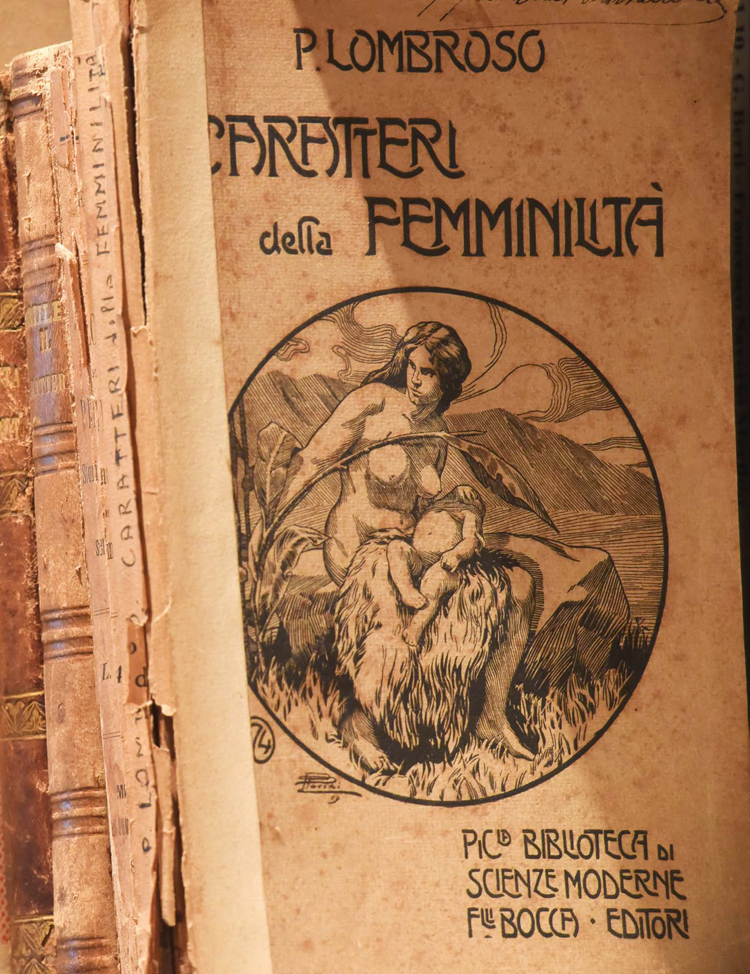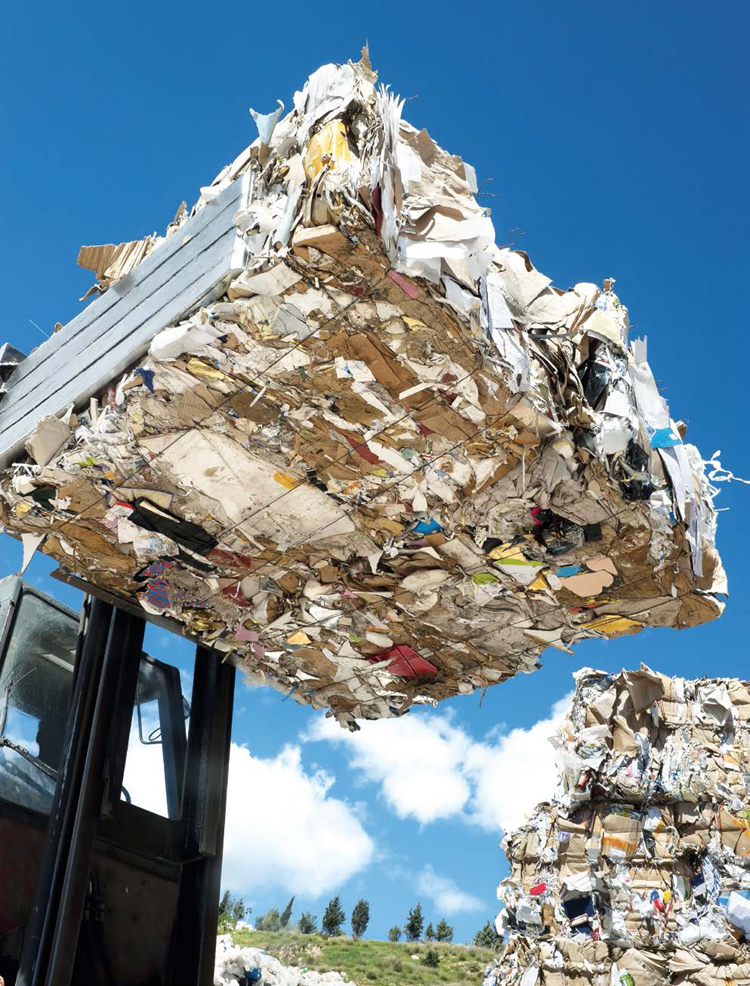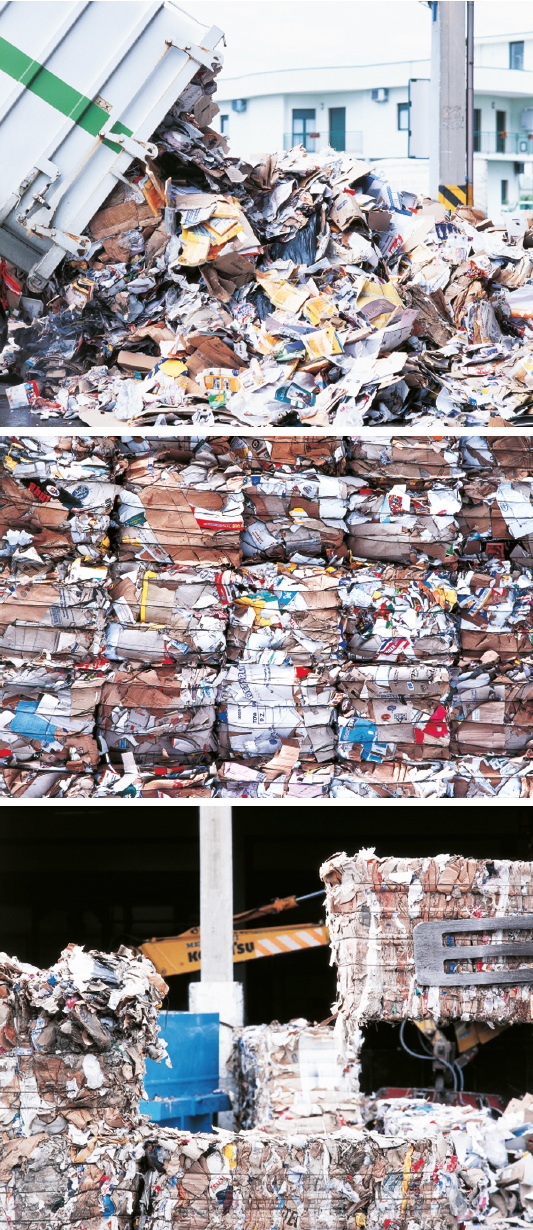Paper history is linked to resources. Already in the 18th century, in Europe, paper experienced the “rags crisis” – the then raw material – and later the extraction of cellulose from wood was discovered. Since then the paper race has known no hurdles. From the first dailies to the mass distribution of books, from packaging to today’s special uses, paper has been one of the products that has characterized the past two centuries, albeit posing serious environmental problems.
Producing an ever-increasing quantity of paper has led to more and more chemicals being used, high energy costs, but more importantly to the need to extract great quantities of cellulose from wood to cope with the market demand. All this pushed the industry – occasionally anticipating the environmentalists’ appeals – to develop methods and practices to recycle paper.
A Successful Story
Paper recycling is a successful story, especially for Italy. Numbers speak volumes. Italy ranks fourth in Europe in the use of recycled paper, with 4.7 million tons of paper used every year (Assocarta data, 2013), 48.4 kg of paper and cardboard pro capita collected in 2013: an increase of 1% compared to the previous year. A significant improvement if we consider that, over the same period, the production of urban waste plummeted by 3.2%.
The cellulose-based packaging sector is the most virtuous one, since 93% of it is recycled: more than nine packages out of ten are re-injected into the cycle. Such figures stem from the scarcity of forest resources in Italy, which pushed companies to equip themselves with technologies and processes for paper recycling.
 |
|
©Sergio Ferraris
|
A Matter of Fibre
Today pulp paper is the main source of fibre for paper products. But not all fibres are the same. Over the years, industrial processes have been developed to optimize the use of cellulose fibres from recycling, which differ according to their end use. The EN 643 standard by CEN (European Committee for Standardization) identifies 95 different types of papers and cardboards to recycle, specifying the maximum percentages of other acceptable non-paper materials and those forbidden, i.e. they must never be traceable in pulp paper for recycling.
Waste that Saves Energy
Waste deriving from paper processing, such as cellulose fibres like cotton wool and staple fibres, if treated in a natural way can become very good insulation for the green building industry going from waste to resource. This is happening in Piedmont where Nesocell, a Turin Polytechnic’s startup of Ip3 incubator, has devised a process, based on natural liquid additives coating the single fibres, in order to improve durability and insulating properties. The product obtained lasts for 50 years, it is resistant to humidity and is perfect as insulation for building with air chamber cladding by injection. It is better performing – with lower costs and equal usability – compared to other oil-based products, such as EPS (Sintered Expanded Polystyrene ) and polyurethanes derived from minerals, like mineral wool or glass wool.
Proximity Recycling
In Europe as well as in Italy, in order to avoid environmental distortions with regard to recycling from countries outside the EU, proximity recycling is being developed, aiming at reducing transport-related CO2 emissions and creating jobs locally. Paris offers a good example of best practice, where paper and cardboard are sent for recycling to four plants near the city. Besides, Syctom – the city agency for household waste – includes a proximity clause in its sales contracts of recycled paper and cardboards, binding the assignee company to process the secondary raw material within the national boundaries or at worst in the neighbouring ones.
But then again, in this respect things are looking good in Italy as well. The average distance from the recycling plant is 17.3 km, while the national industry has a rate of utilisation of pulp paper of over 55.2%. Basically, every 100 tons of paper produced in Italy, 55 come from recycled paper.
Taking Care of Collection
In Italy, the collection of secondary fibre has two channels. The first is the downstream processing companies receiving paper mills’ production waste and unsold papers and packaging from the large-scale retail trade and companies. It is secondary raw material selected at source and ready to be used in the paper mill. The second channel is separate collection of urban waste that needs to be selected before getting to the paper mill. Without recycling, all this paper would just be sent to the landfill as waste: every year, its reuse avoids building 20 middle-sized extra landfills.
In Italy, separate collection of paper and cardboard has now been an established practice for quite some time. Comieco – the national consortium for the collection and recycling of cellulose-based packaging – has been active for years and many producers, importers, cellulose-based products processing plants and recyclers have joined. Its tasks include drawing up agreements and managing the cellulose-based collection and recycling system in the various municipalities. Today Comieco covers 70.7% of all municipalities, 83.9% of the population, and has collected within the agreement 1.5 million tons of paper and cardboard, providing the participating municipalities with €88 million (according to the 2013 data).
Easier to Separate
Flexible polylaminate packaging is one of recycling’s biggest problems, especially for drinks made of cardboard, aluminium and plastic. In the Lucart Group paper factories, for the first time in Italy, devised a system to separate the three materials to be sent for recycling. The cellulose fibre obtained, 74% of the packaging, is used as raw material for the company’s main products as well, while plastic and aluminium are given to other companies utilising them as raw materials in the packaging and building industries. Such system enables many municipalities to collect flexible polylaminate packaging for drinks together with paper, thus streamlining the separate waste collection process and avoiding incineration or disposal in landfills.
The Efficiency of Paper Mills
Any mention of the Möbius strip must include what happens in the sector, besides recycling. 75% of virgin cellulose fibre used by Italian paper mills is certified, as opposed to only 10% of global forests. In the treatment of this virgin fibre, paper mills do not use chlorine gas and in 40 years they have managed to reduce the use of water by 66%. More importantly, over the last 18 years paper factories have improved their energy efficiency by 20%, utilizing cogeneration, since in order to produce paper both electricity and heat are needed.
Therefore, if the economy is to become circular, paper stands a very good chance to become a cutting-edge material, to come full circle.
 |
|
©Assocarta
|
Interview with Massimo Medugno, Managing Director of Assocarta
Secondary Raw Materials
With regard to the paper supply chain and recycling, paper factories are at the forefront. We asked Massimo Medugno, managing director of Assocarta, to provide us an overview from a company point of view.
How important is paper recycling in the paper industry?
“Pulp paper is the main raw material of the industry. Paper recycling is an efficient system. Today a newspaper sent for recycling comes back in production after 7 days, a corrugated cardboard box, in 14 days.”
What are the main problems?
“The Italian paper industry has invested considerably in paper collection and it now risks being penalized just for its ability to manage the situation in a proactive way. The main competitors outside the EU, such as China, have access to our secondary raw materials fields without meeting the costs and without the same environmental obligations.”
So, what happens?
“We are working in order to implement those principles according to which, in order to avoid environmental dumping, non-European companies must operate in line with the same European recycling practices, respecting environmental standards.”
 |
|
©Assocarta
|
As far as collection is concerned, are companies satisfied?
“Collection is a key element for environmental sustainability. The national increase rate, which is a sign of improved infrastructure for the collection of paper, has occurred thanks to the contribution offered by Comieco, with its member paper mills and processors. This has reduced the disposal in landfills, expanding the flow of separate collection of urban waste, while lowering imports, now relegated to particular types of pulp paper not available in sufficient quantity in our country.”
Info
 Interview with Carlo Montalbetti, Managing Director of Comieco
Interview with Carlo Montalbetti, Managing Director of Comieco
Paper from the South
Comieco Consortium is a historic protagonist in the collection of pulp paper. His managing director, Carlo Montalberti, explains how recycling developed in Italy and reveals to us the next strategies of his Consortium.
How were such paper recycling high percentages made possible in Italy?
“Thanks to two key and synergetic aspects. The first was the need to overcome waste disposal in landfills, since we were Europe back-markers. The second is linked to the demand of the material: Italy is rich in ‘poor forests’ and over time the paper industry had first to resort to rags, then to agricultural waste and since the 50’s to pulp paper. But that was not enough. In the packaging sector, up until 2005, we imported 1.2 million tons of pulp paper. Then, with the increase of separate waste collection, we cancelled such imports and we are now pulp paper exporters.”
 |
|
©Comieco
|
Is there still room for improvement?
“Yes. We reckon there are at least 500,000 tons of cellulose fibre in urban waste that can still be used. The areas where this can be achieved are certainly Rome and most of Southern Italy, where we are focussing at the moment.”
How?
“We launched a special plan for the South in which we invested money as well. For the first time we are investing €7 million to help the municipalities of the South to achieve an efficient collection system. This is in addition to the national contribution worth €100 million a year. It has to be said that the South boasts some positive examples as well: Bari, for instance, collects 68 kg of paper pro capita yearly, comparable to that of Milan.”
Info
Top image: M.C. Escher’s Möbius Strip II, 1963
©2015 The M.C. Escher Company-The Netherlands. All rights reserved. www.mcescher.com


